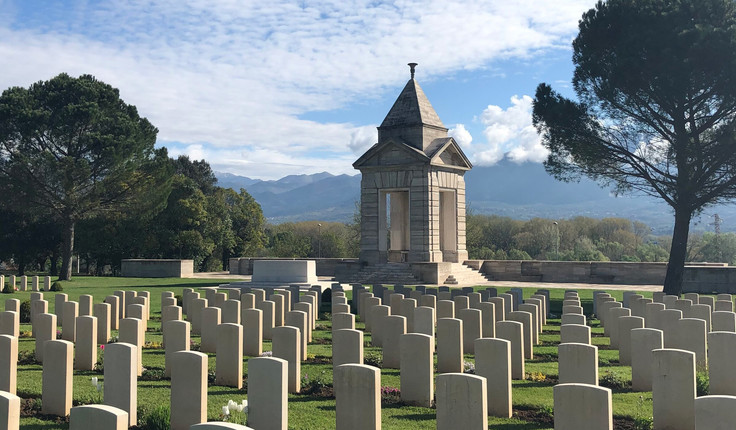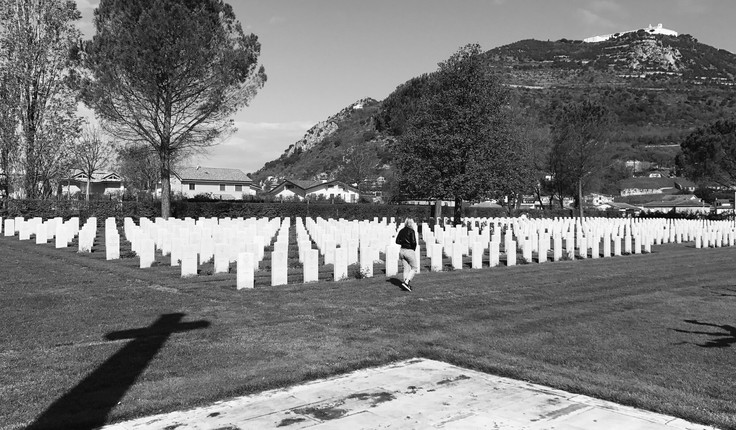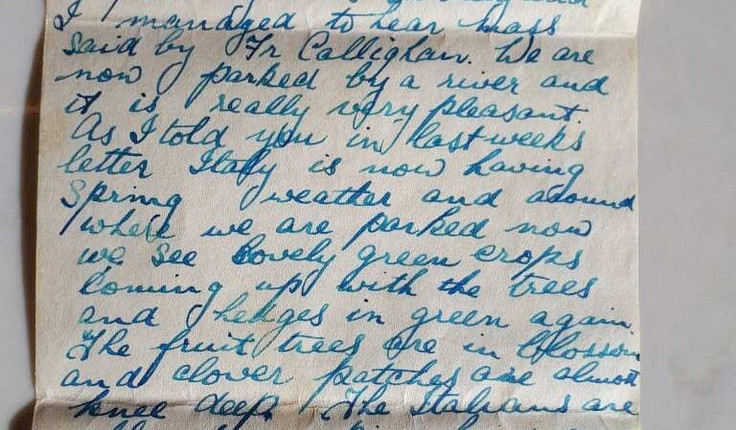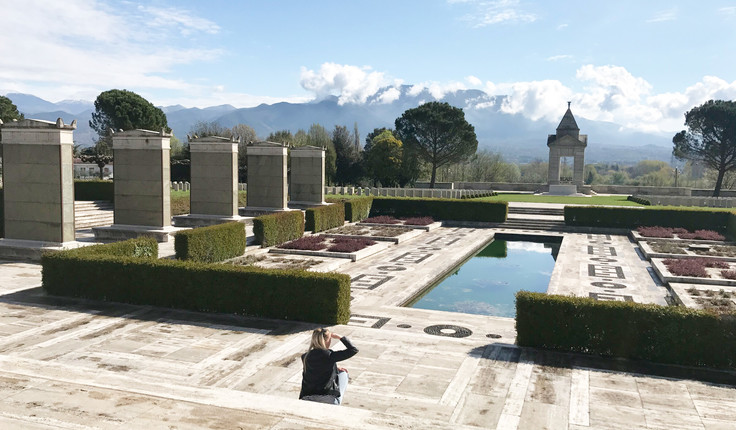News
In memory of Sgt. Brendan T. Wilkins
Posted 28 04 2020 by Anne Wilkins
in Magazine

The lazy squawk of the chickens, and the distant buzz of farm machinery, signifying the working Italian countryside.
This is a time to reflect. For me, April last year was frenetically navigating a shrill car through the roaring streets of Rome, to travel south to a landscape outside of the bustle of the city. A juxtaposition to the madness, the sounds, and the throngs of people, to the crisp calm air of midland rural Italy. This is where my Grandad fought in the war, and where many battles were fought in the surrounding fields, shorelines and hillsides. It is the location where many NZ troops are buried, a landscape very closely linked to history.
The morning was sunny and quiet, arriving at the Commonwealth Cemetery in Cassino. The lazy squawk of the chickens, and the distant buzz of farm machinery, signifying the working Italian countryside. A far sight different to the sounds of yesterday and the intricate link between this environment and the actual historic events that happened here was ringing in my ears. This landscape has seen many things.
The Commonwealth Cemetery design is crafted, but soft. The layout has been designed centrally, focused inward around features and monuments, whilst simultaneously facing outwards to surrounding natural landscape. The large stone monuments are austere and stark. The expansive water feature reflects the ridgeline of the Monte Cassino hill adjacent.
The gravestones are laid out in neat rows, looking proudly out to the lower-lying rural plains. Punctuated by white tulips, mature trees, and fields of grass it is not unlike any other cemetery. Except it is; my Grandad carried wounded and dying men not metres away, laying them in similar rows, a startling thought while walking around this place. He was driving ambulances from the front lines of a desperate world war. Movement around the landscape to field dressing stations was crucial, and the German forces often targeted and shelled these ambulances to demoralise our troops, vulnerable as they traversed the undulating fields of the surrounding lands.
Smatterings of mature trees stand tall and spindly in the surrounding paddocks. It was not possible to look at them, without wondering what they may have witnessed. Were they a backboard, a leaning post, for exhausted soldiers looking for some rest? Were they used as a refuge from all those weeks through the rain or snow, their branches providing valuable shelter for the weary or injured? Drying wet, woollen army issue socks upon? But the trees views have now changed, and they sit quietly, keeping their secrets.


The hill of Monte Cassino looks sheepishly over the surrounding area, a landmark battled over for months. Its presence is not domineering, but it was a landscape of such significance. The Germans held up the Allied forces there for a long time before they could advance north. Ground attacks on the Cassino mount went on for days and nights, until 27th March 1944, where the hillside was beat, and the NZers moved forward over the ridge to camp near a low-lying river. This hill meant the difference between life and death. Every inch across the grass was a mile. That comparatively small geographical feature was tied to a much larger, broader war, where victories were made over metres of landscape.
The environment dictated life, and battle, in a lot of ways. The troops used valleys and lower topography for concealment, for safety. The rivers and the streams, as landmarks, for camp areas and for accessing vital natural resources. My Grandad writes that thick mud caused many issues; a treacherous landscape created by very bad weather which held up troop movement and operations for weeks. The conditions were synonymous with illness and interruptions. This landscape fought back.
But this wasn’t always the case, and he evidently relished being in the dynamic Italian countryside, describing in letters home; “..the fruit trees are in blossom and clover patches are almost knee deep…The Italians are working hard…dragging wooden ploughs amongst the olive trees”. He being a farmer from rural Southland, this seemingly spoke to him of home. The landscape can do that; acting as a constant memorial, an anchor, to tie to history and events, to memory and culture, and to evoke feeling. He saw it, in those green fields, that I was so lucky to look upon too.
And so, reflecting on this beautiful place that has seen so much. For my Grandad, Sgt. Brendan T. Wilkins of the NZ Sect. MAC. 2nd NZEF, for the many like him, and for those who rest in that grass, and under those trees. May we keep them alive not only in memory, but in the landscapes that hold them.
Anne Wilkins is the principal landscape architect at Novo Group.
Share

19 Dec
Christmas break 2025

see you from 12 January
As we wrap up another big year, we’re taking a moment to pause, breathe, and enjoy a well-earned break. Meri …
18 Dec
President’s update

December 2025
Earlier this month I attended the Ngā Aho Māori Design Professionals Wānanga-ā-Tau at Te Aranga Marae in Flaxmere. Tuia Pito …
18 Dec
Awards 2026 update

An update as we warm up for the 2026 Awards kaupapa. Submissions will open in March and will run for …
Events calendar
Full 2026 calendar